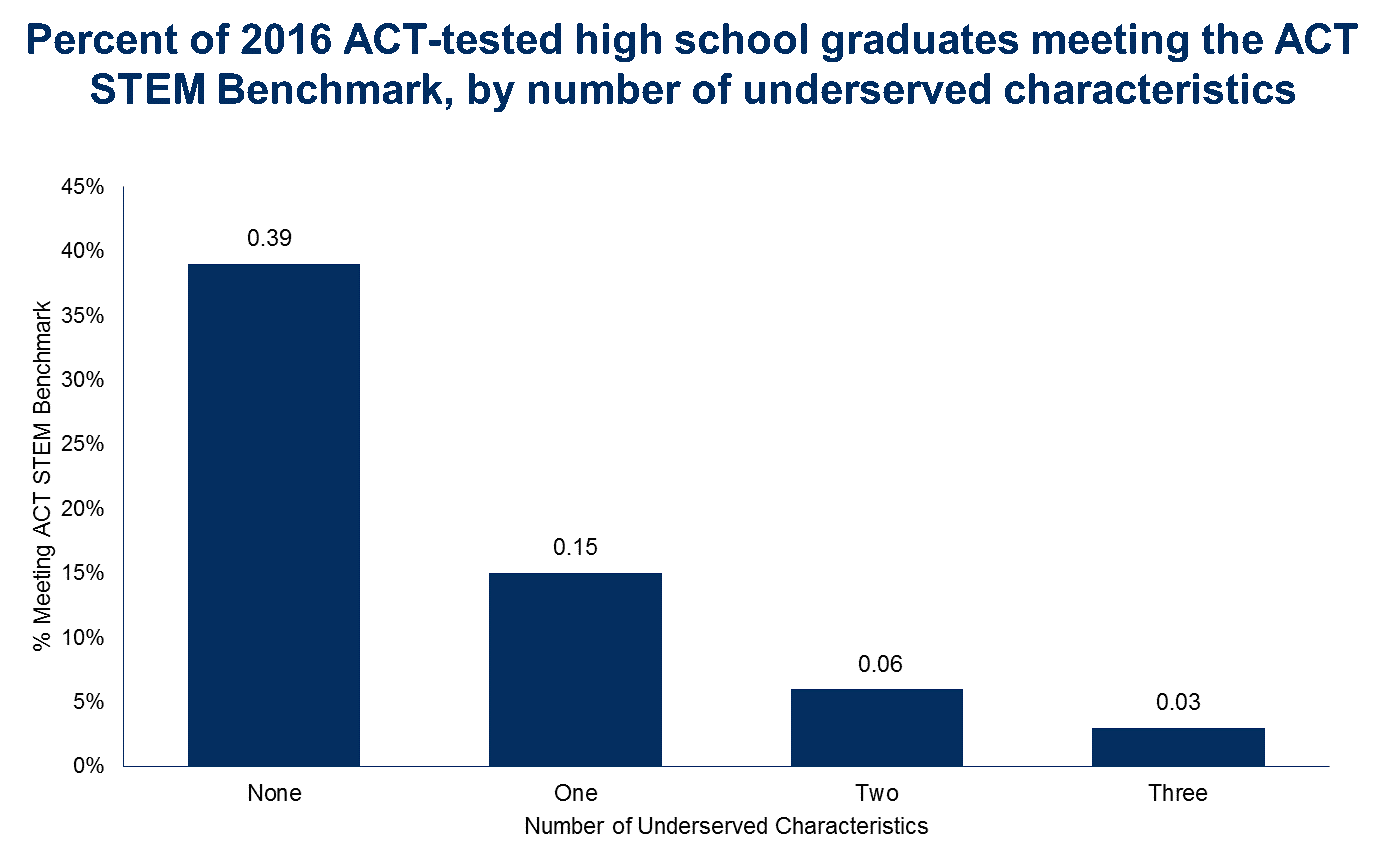ACT research, including our annual Condition of STEM report, has consistently shown that only just over a quarter of students who are interested in STEM (science, technology, engineering, and math) fields or majors are prepared to major in a STEM discipline in college. While national conversations about STEM have focused on increasing both student interest in STEM careers and student achievement in STEM subjects, additional ACT research (see here and here) shows that persistence in STEM majors is much more strongly impacted by ACT scores and high school grade point averages than by a student’s interest in STEM.
This confirmation of the importance of effective STEM preparation in the K-12 years rings even more true for traditionally underserved students. Students with “underserved characteristics,” defined as belonging to certain racial/ethnic groups, coming from a low-income household, and/or having parents who have not attended educational institutions beyond high school, are considerably less likely to meet the ACT STEM benchmark (earning an average of 26 or above on the combined math and science sections of the ACT). Twenty percent of test takers in the graduating class of 2016 met the STEM benchmark, but this average obscures dramatic and troublesome discrepancies: 39 percent of students with zero underserved characteristics met the STEM benchmark, while only three percent of students with all three characteristics did so.
This unequal preparation will only further entrench systemic inequities, since STEM jobs are growing at a higher than average rate in today’s job market and 93 percent of STEM occupations pay more than the national average. It is vital that U.S. primary and secondary schools adequately prepare all of their students to succeed in STEM. To accomplish this imperative, ACT’s policy department has recommended that the federal, state, and local levels of government maintain or increase funding for STEM education programs. Education authorities must also prioritize initiatives such as dual enrollment; professional development for STEM teachers; support for STEM content, courses, and activities; and the use of technology in instruction.
For additional information, see the policy brief Preparation Matters in STEM.

